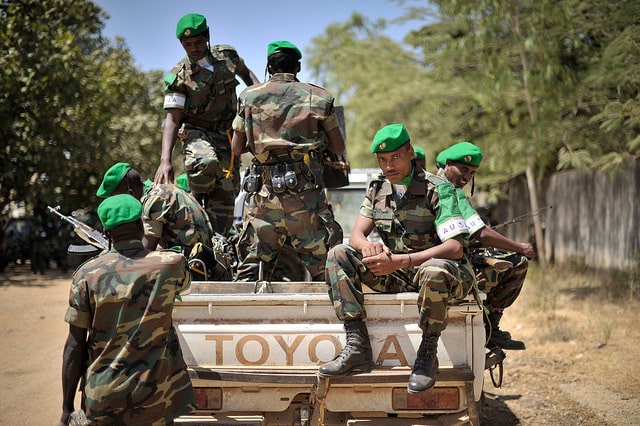Somali Magazine – The drawdown of African peacekeepers from Somalia, a process that has been ongoing for nearly 17 years, has hit a roadblock. The African Union force, which has been trying to help the government in its effort to stabilize the country and push back jihadists, had planned to withdraw 3,000 troops at the end of September. However, this plan has been shelved due to concerns that Somalia’s army might be unable to hold territory that had previously been recaptured from al-Shabab.
Al-Shabab, a jihadist group, has been dubbed the largest and most deadly al-Qaeda network currently in the worl by America’s military command for Africa. The AU agreed to pause the drawdown for three months after a last-minute talk with Somalia’s government. This decision is pending approval from the UN Security Council, which had previously stated that the African Union Transition Mission in Somalia (ATMIS) should number no more than 14,626 from October and be completely withdrawn by the end of 2024.
The question of funding for the peacekeepers remains unanswered. The European Union, which has provided more than €2.6bn ($2.7bn) to ATMIS and its predecessor, AMISOM, since 2007, has been reluctant to continue funding what some of its members see as a never-ending commitment. This comes at a time when the Somali army has made real progress¹.
Last year, clans rose up against al-Shabab in central Somalia, where locals were angry with the militants for conscripting their sons and taking their livestock. The new president, Hassan Sheikh Mohamud, sent in the national army to support them, backed by American and Turkish air power. Together, the soldiers and clan militias pushed al-Shabab out of a third of the territory it controlled.
As Somali forces advanced, ATMIS secured bases and towns. However, the national army is not well equipped. After 2,000 troops left in June, some of the bases ATMIS handed over were targeted by al-Shabab. The Armed Conflict Location & Event Data Project, which monitors violence, reports a surge in attacks along the border with Kenya.
The situation in Somalia is complex, and the stalled drawdown of African peacekeepers adds another layer of complexity. The international community, particularly the AU and the UN, must work together to ensure a smooth transition and prevent a resurgence of al-Shabab. The future of the entire region depends on it.

